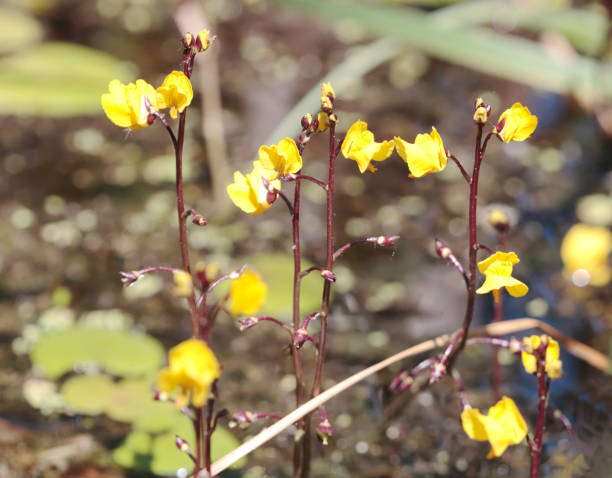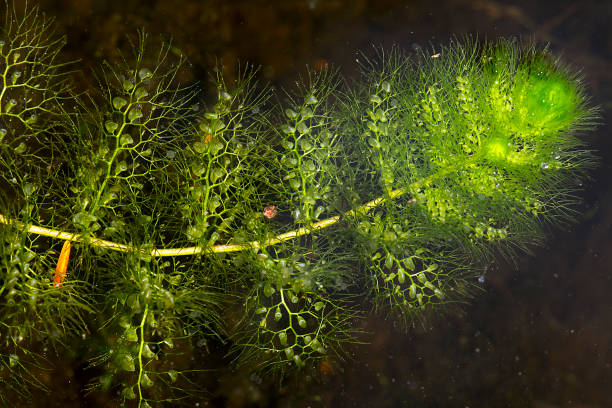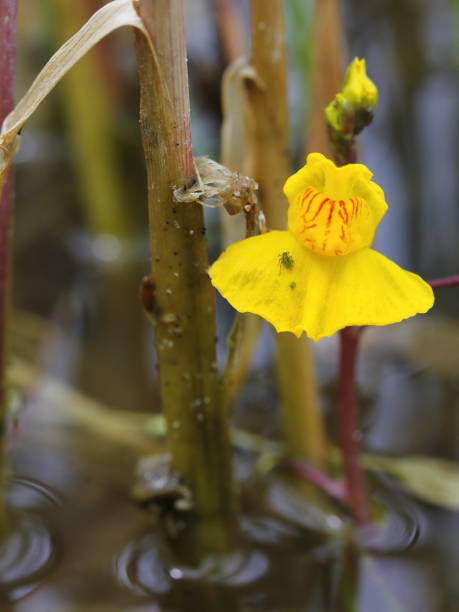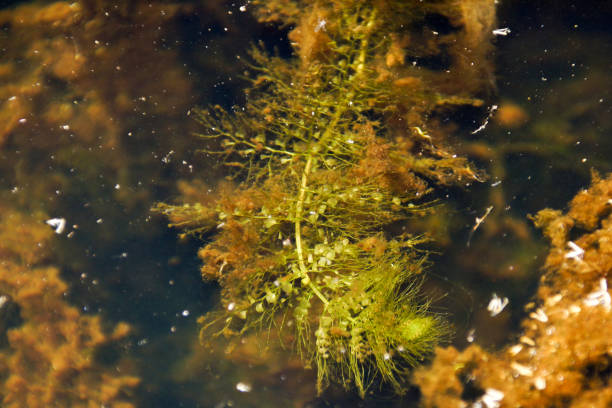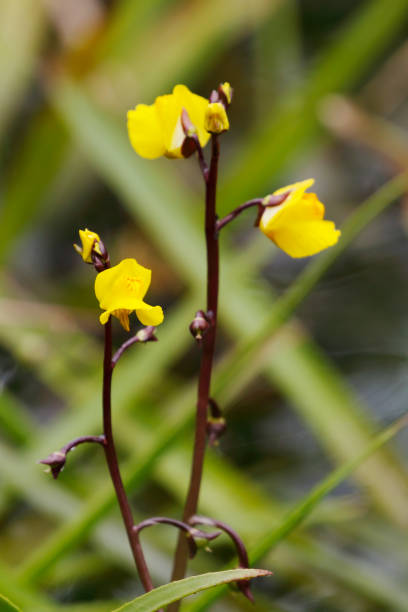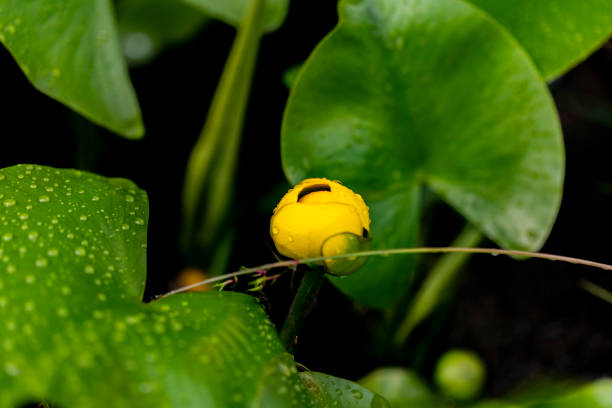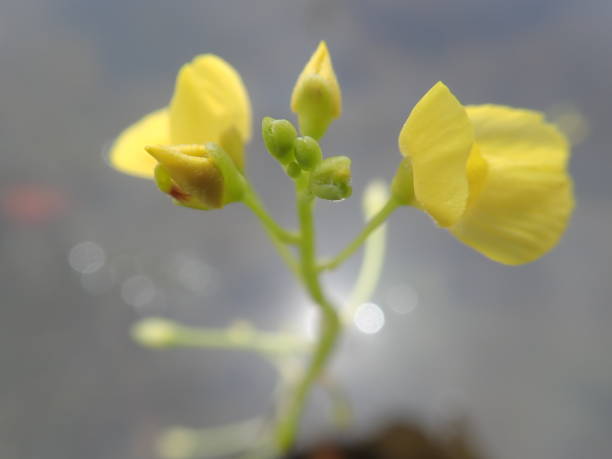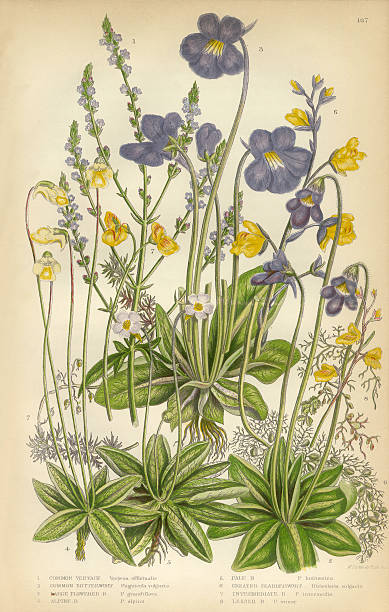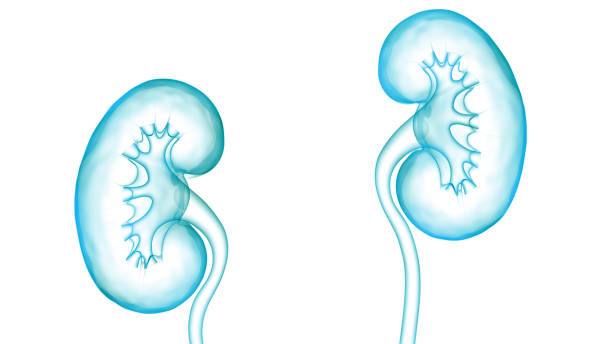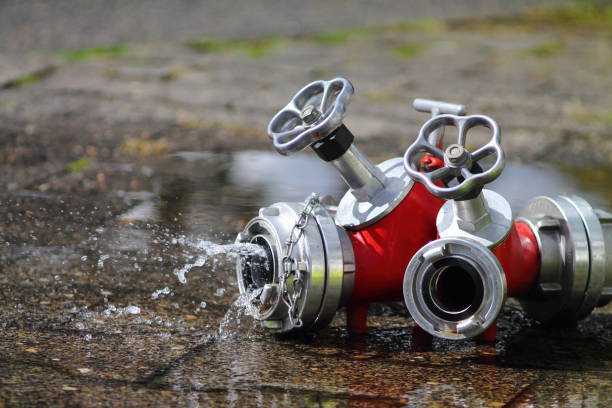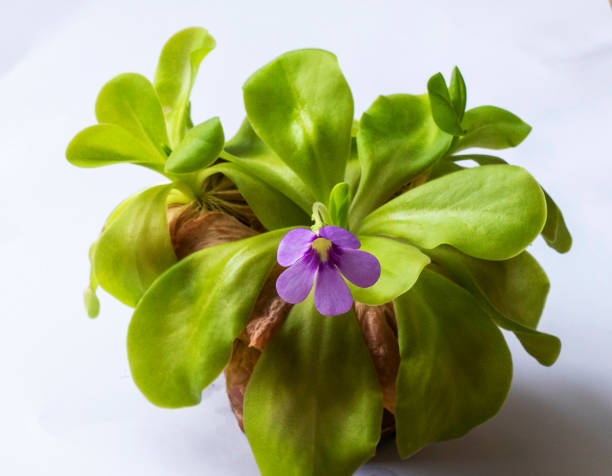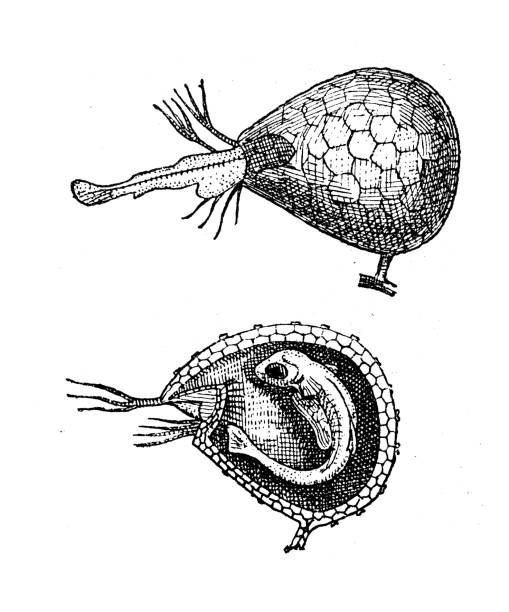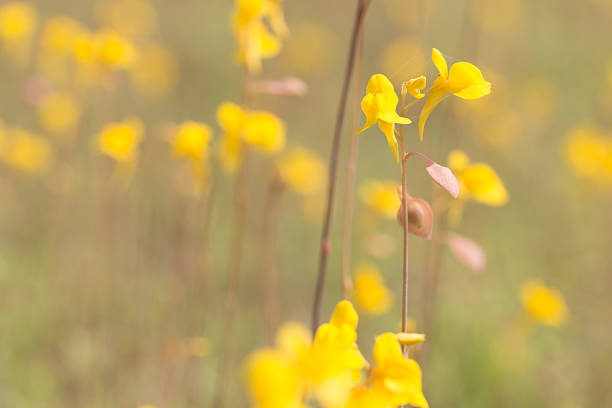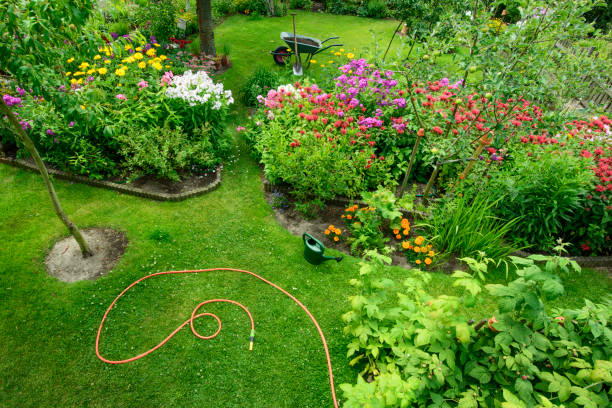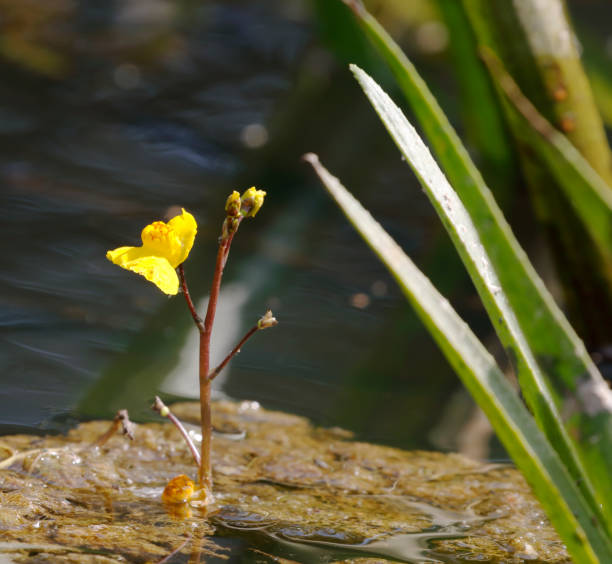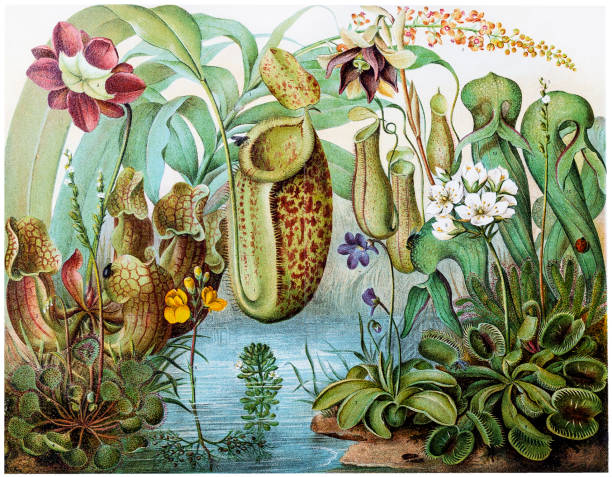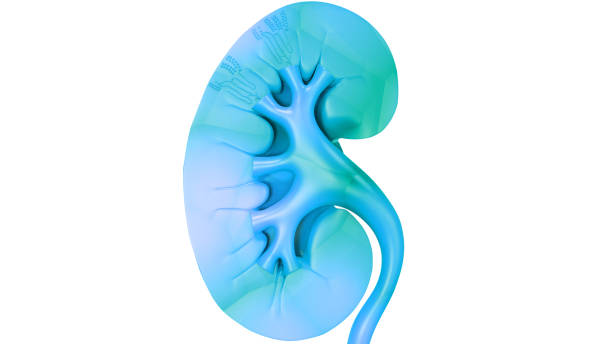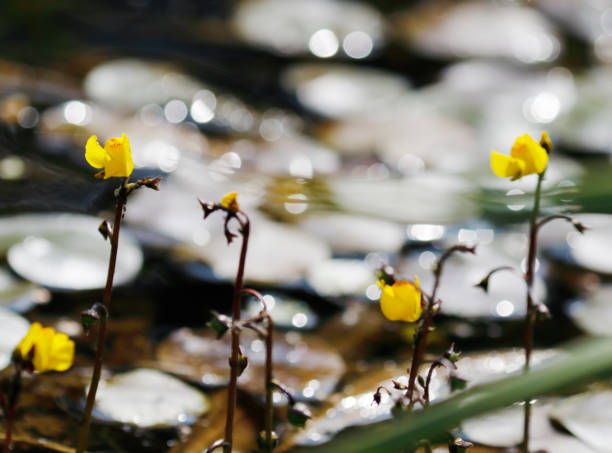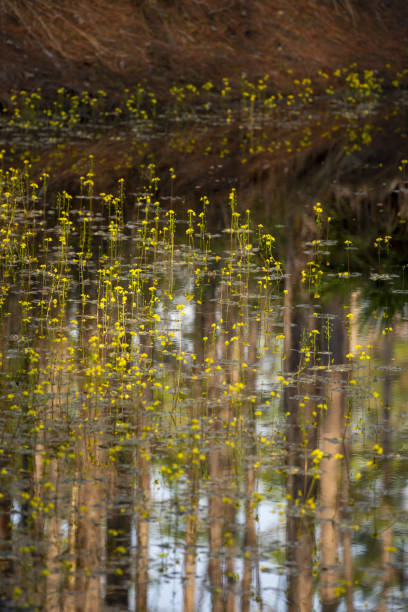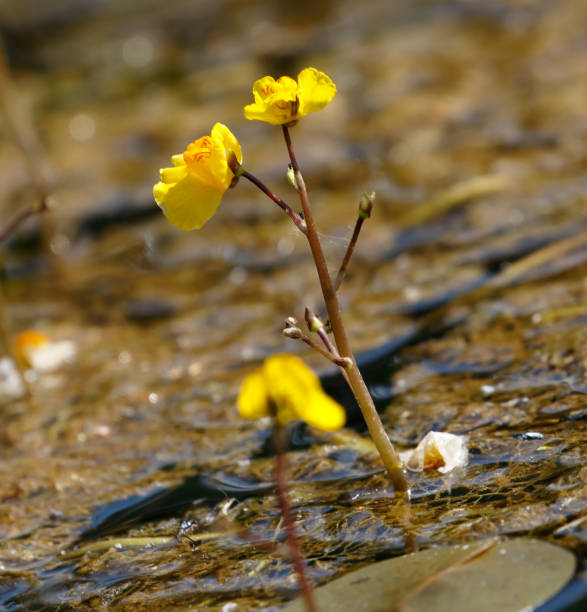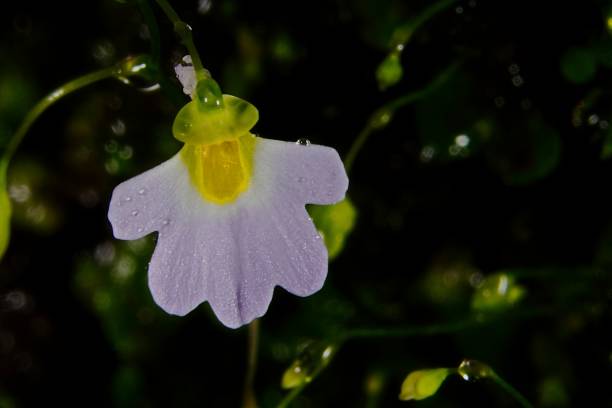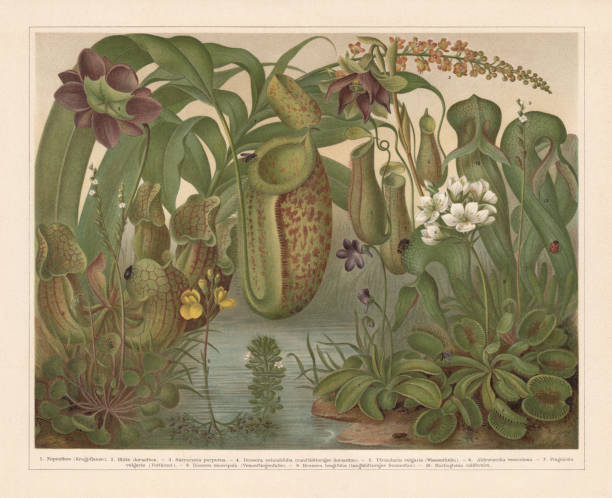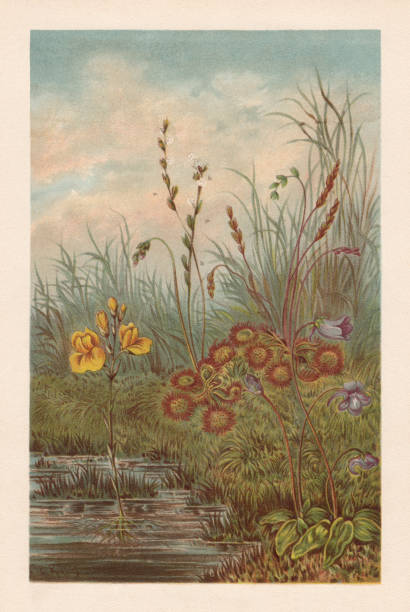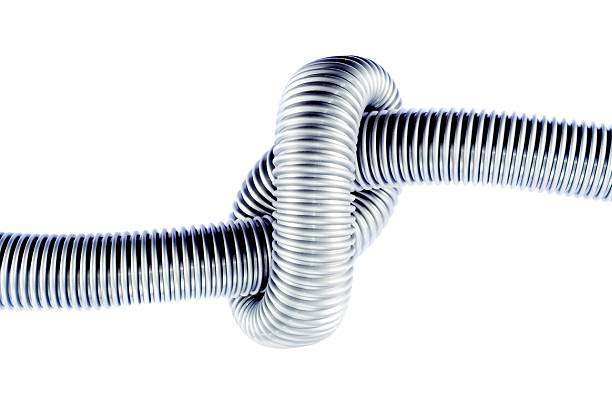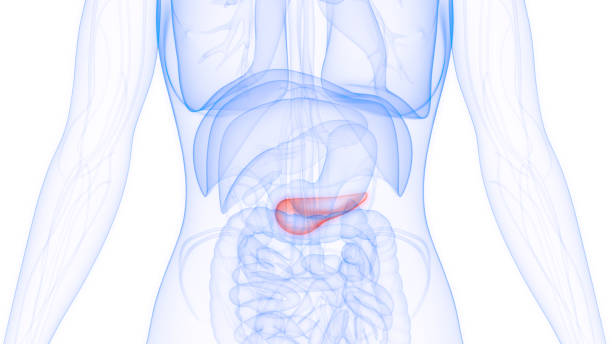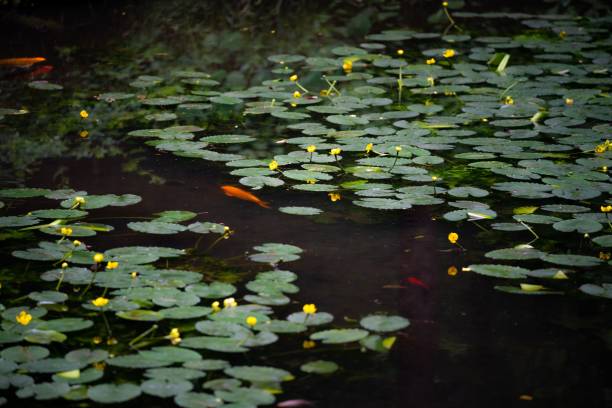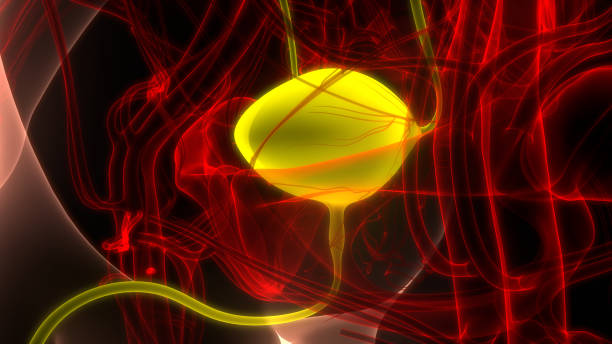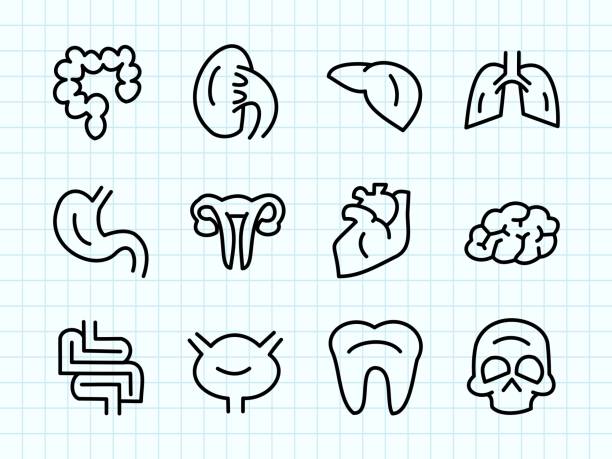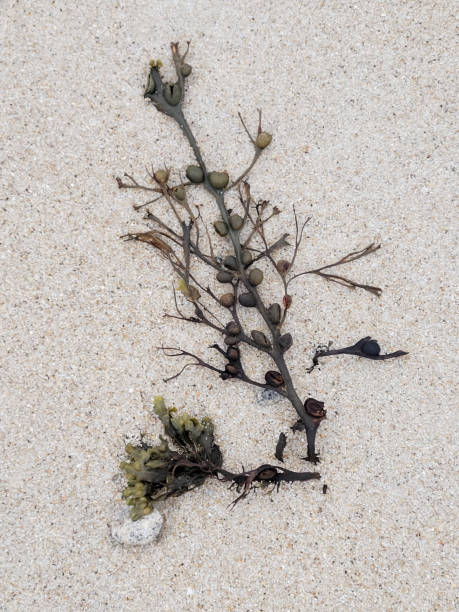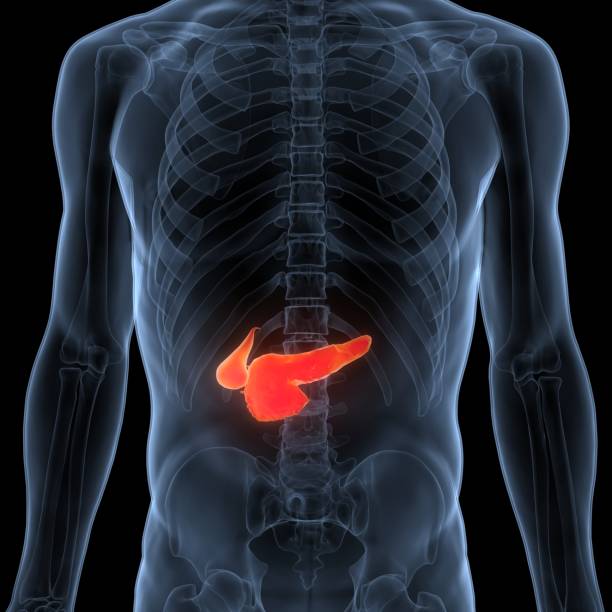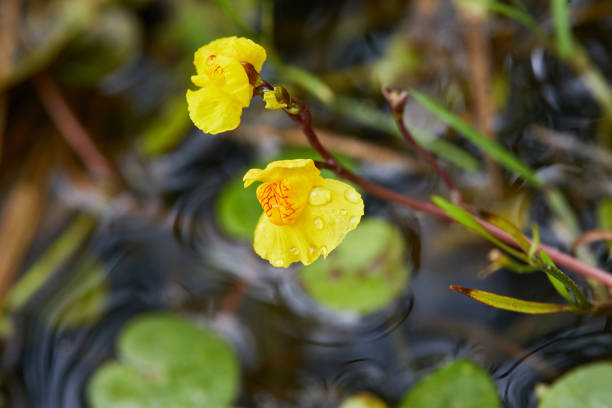
Utricularia Pictures, Images and Stock Photos
Browse 960+ utricularia stock photos and images available, or search for utricularia vulgaris or utricularia australis to find more great stock photos and pictures.

Utricularia vulgaris, a kind of carnivorous plant, it grows in pond. Bladderwort - Utricularia australis
Floating and submerged aquatic perennial with slender stems all of one kind. Leaves oval in outline, pinnately divided into narrow, toothed segments, each tooth tipped by a bristle or several bristles; bladders 3mm. Flowers deep yellow, 12-18mm, 4-10 in the raceme, the lower lip of the corolla bent down; spur conical, pointed; fruiting freely. Capsules borne in strongly recurved stalks.
Leaf of bladderwort, Utricularia vulgaris, a carnivorous plant at Mud Pond in Sunapee, New Hampshire.
Utricularia australis is a medium-sized, perennial species of aquatic bladderwort.
The aquatic bladderwort Utricularia australis occurs in a pond near Launceston, Tasmania
Floating and submerged aquatic perennial with slender stems all of one kind. Leaves oval in outline, pinnately divided into narrow, toothed segments, each tooth tipped by a bristle or several bristles; bladders 3mm. Flowers deep yellow, 12-18mm, 4-10 in the raceme, the lower lip of the corolla bent down; spur conical, pointed; fruiting freely. Capsules borne in strongly recurved stalks. Habitat: Grows in up to 1m of fresh standing nutrient arm waters. Flowering Season: July-August. Distribution: Throughout Europe, except Iceland and Spitsbergen. This Picture is made in de “Weerribben” (Overijssel), the Netherlands in 2020.
Flower of aquatic bladderwort (Utricularia australis) in the pond
Utricularia sp. flower blooming in the pond with blur background. Utricularia, commonly and collectively called the bladderworts, is a genus of carnivorous plants.
Illustration of a Utricularia vulgaris (greater bladderwort or common bladderwort)
Yellow flowers of bladderwort, Utricularia vulgaris, a carnivorous plant at the Philbrick-Cricenti Bog in New London, New Hampshire, in summertime.
Very Rare, Beautifully Illustrated Antique Engraved Verbena, Vervain, Butterworth, Pinguicula, Bladderwort, Victorian Botanical Illustration, from The Flowering Plants and Ferns of Great Britain, Published in 1846. Copyright has expired on this artwork. Digitally restored.
golden bladderwort or Utricularia aurea at Lake Thale Noi Waterfowl Reserve, Khuan Khanun, Thailand
3D Illustration Concept of Human Urinary System Kidneys Anatomy
3D Illustration Concept of Human Urinary System Kidneys with Bladder Anatomy
3D Illustration Concept of Human Urinary System Kidneys Anatomy
Adapter device for fire service with running water. Aqua pipe.
Flowers of plants in the house
3D Illustration Concept of Human Urinary System Kidneys Anatomy
3D Illustration Concept of Human Internal Organ Pancreas Anatomy
Wild flower, Utricularia bifida ,yellow flowers in golden paddy field on bright day, design for nature background with copy space
3D Illustration Concept of Human Urinary System Bladder Anatomy
Garden - elevated view
3D Illustration Concept of Human Urinary System Kidneys with Bladder Anatomy
3D Illustration Concept of Human Urinary System Kidneys Anatomy
3D Illustration Concept of Human Internal Organ Pancreas with Gallbladder Anatomy
3D Illustration Concept of Human Urinary System Kidneys Anatomy
Floating and submerged aquatic perennial with slender stems all of one kind. Leaves oval in outline, pinnately divided into narrow, toothed segments, each tooth tipped by a bristle or several bristles; bladders 3mm. Flowers deep yellow, 12-18mm, 4-10 in the raceme, the lower lip of the corolla bent down; spur conical, pointed; fruiting freely. Capsules borne in strongly recurved stalks. Habitat: Grows in up to 1m of fresh standing nutrient arm waters. Flowering Season: July-August. Distribution: Throughout Europe, except Iceland and Spitsbergen. This Picture is made in de “Weerribben” (Overijssel), the Netherlands in 2019.
3D Illustration Concept of Human Urinary System Kidneys with Bladder Anatomy
3D Illustration Concept of Human Internal Organ Pancreas Anatomy
Illustration of a venus fly trap
3D Illustration Concept of Human Urinary System Kidney Anatomy
Floating and submerged aquatic perennial with slender stems all of one kind. Leaves oval in outline, pinnately divided into narrow, toothed segments, each tooth tipped by a bristle or several bristles; bladders 3mm. Flowers deep yellow, 12-18mm, 4-10 in the raceme, the lower lip of the corolla bent down; spur conical, pointed; fruiting freely. Capsules borne in strongly recurved stalks. Habitat: Grows in up to 1m of fresh standing nutrient arm waters. Flowering Season: July-August. Distribution: Throughout Europe, except Iceland and Spitsbergen. This Picture is made in de “Weerribben” (Overijssel), the Netherlands in 2019.
Photo taken at Goethe state forest in north central Florida. Plant is Floating Bladderwort (Utricularia inflata). Nikon D7200 with Nikon 70-200mm lens (AF-S NIKKOR 70-200mm f/2.8E FL ED VR)
Floating and submerged aquatic perennial with slender stems all of one kind. Leaves oval in outline, pinnately divided into narrow, toothed segments, each tooth tipped by a bristle or several bristles; bladders 3mm. Flowers deep yellow, 12-18mm, 4-10 in the raceme, the lower lip of the corolla bent down; spur conical, pointed; fruiting freely. Capsules borne in strongly recurved stalks. Habitat: Grows in up to 1m of fresh standing nutrient arm waters. Flowering Season: July-August. Distribution: Throughout Europe, except Iceland and Spitsbergen. This Picture is made in de “Weerribben” (Overijssel), the Netherlands in 2019.
3D Illustration Concept of Human Urinary System Kidneys with Bladder Anatomy
3D Illustration Concept of Human Urinary System Kidneys with Bladder Anatomy
Utricularia striatula is a small carnivorous plant that belongs to the genus Utricularia. It is widespread from tropical Africa to New Guinea. U. striatula grows as a lithophyte or epiphyte on wet rocks or tree trunks at altitudes from near sea level to 3,300 m (10,827 ft). There are around 233 species in the genus Utricularia, belonging to the Bladderwort family (Lentibulariaceae). It is the largest genus of carnivorous plants and has a worldwide distribution, being absent only from Antarctica and the oceanic islands. This genus was considered to have 250 species until Peter Taylor reduced the number to 214 in his exhaustive study, The genus Utricularia - a taxonomic monograph, published by HMSO (1989). Taylor's classification is generally accepted, though his division of the genus in two subgenera was soon seen as obsolete. Molecular genetic studies have mostly confirmed Taylor's sections with some modifications (Jobson et al., 2003), but reinstalled the division of the genus in three subgenera.
3D Illustration Concept of Human Urinary System Bladder Anatomy
3D Illustration Concept of Human Urinary System Kidneys with Bladder Anatomy
Carnivorous plants: 1) Tropical pitcher plant (Nepenthes) with blossom (2); 3) Purple pitcher plant (Sarracenia purpurea); 4) Round-leaved sundew (Drosera rotundifolia); 5) Greater bladderwort (Utricularia vulgaris); 6) Waterwheel plant (Aldrovandia vesiculosa); 7) Common butterwort (Pinguicula vulgaris); 8) Venus flytrap (Dionaea muscipula); 9) English sundew (Drosera anglica, or Drosera longifolia); 10) California pitcher plant (Darlingtonia californica). Chromolithograph, published in 1897.
Carnivorous plants in peat bog: Bladderwort (Utricularia vulgaris, left), Sundew (Drosera rotundifolia, center), Butterwort (Pinguicula vulgaris, right). Chromolithograph, published in 1894.
node in a flexible plastic tube
3D Illustration Concept of Human Urinary System Kidneys with Bladder Anatomy
3D Illustration Concept of Human Internal Organ Pancreas Anatomy
A beautiful view of lily pads and utricularia in the pond
3D Illustration Concept of Human Urinary System Kidneys with Bladder Anatomy
3D Illustration Concept of Human Urinary System Bladder Anatomy
3D Illustration Concept of Human Urinary System Kidneys with Bladder Anatomy
3D Illustration Concept of Human Urinary System Bladder Anatomy
Water hose - thumb on it
3D Illustration Concept of Human Urinary System Kidneys with Bladder Anatomy
3D Illustration Concept of Human Urinary System Kidneys Anatomy
3D Illustration Concept of Human Urinary System Kidneys Anatomy
3D Illustration Concept of Female Urinary System Kidneys with Bladder Anatomy
Bladderwort seaweed on a beach in the Isles of Scilly.
Utricularia vulgaris, a kind of carnivorous plant, it grows in pond. Bladderwort - Utricularia australis
3D Illustration Concept of Human Internal Organ Pancreas with Gallbladder Anatomy
